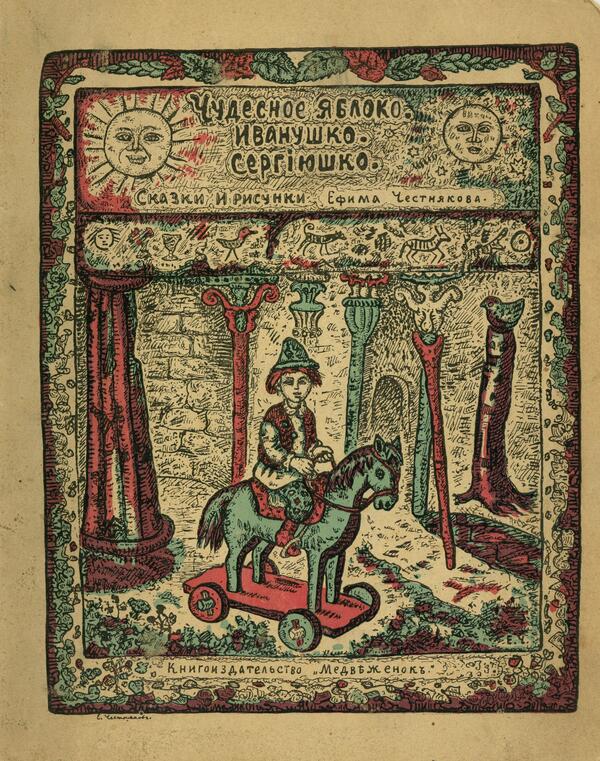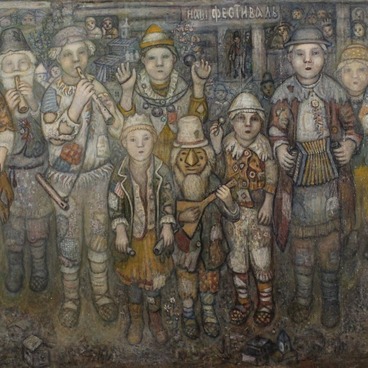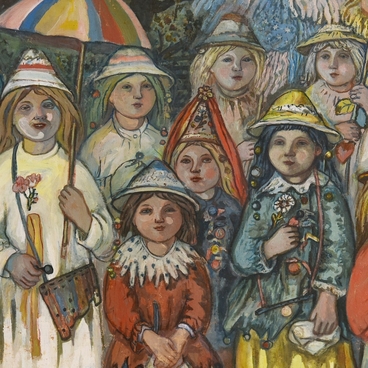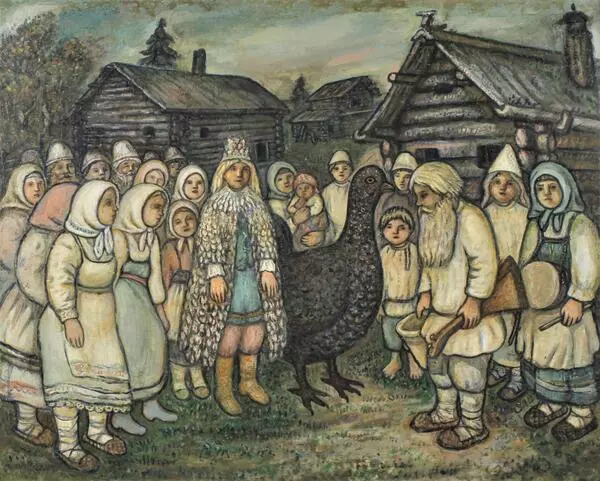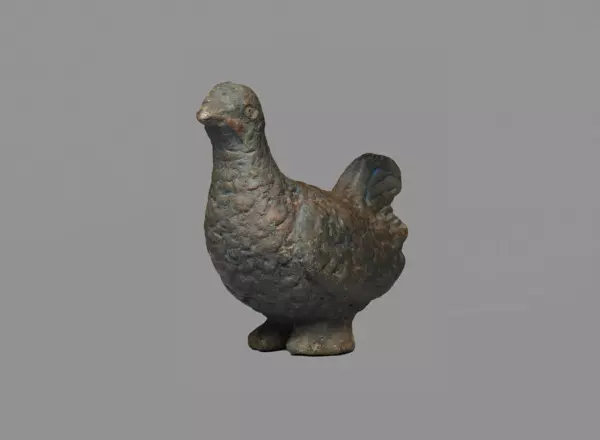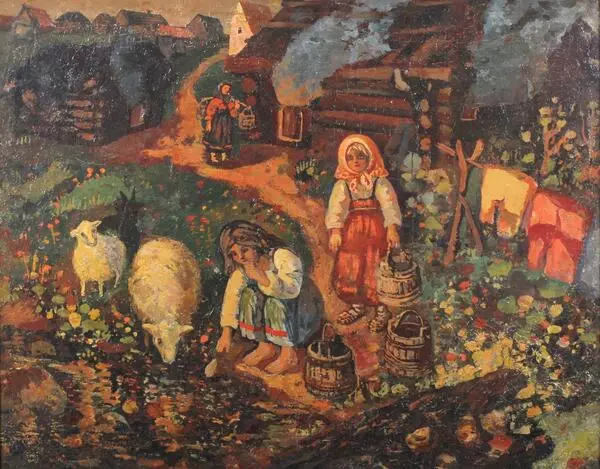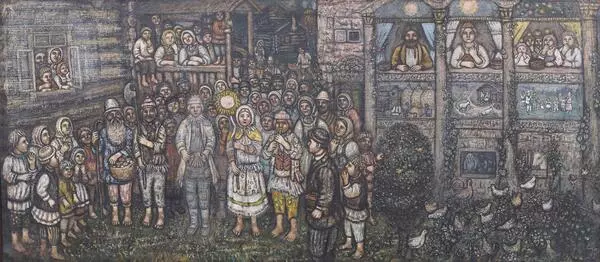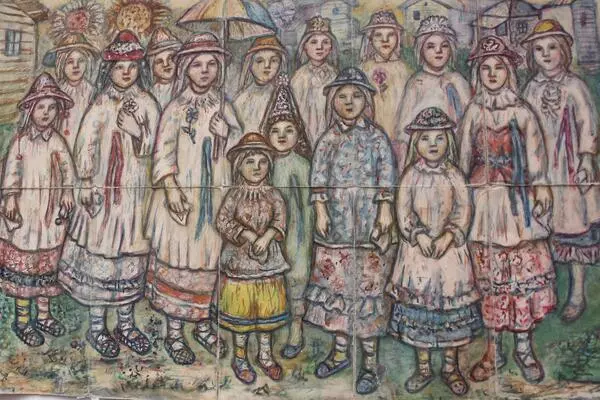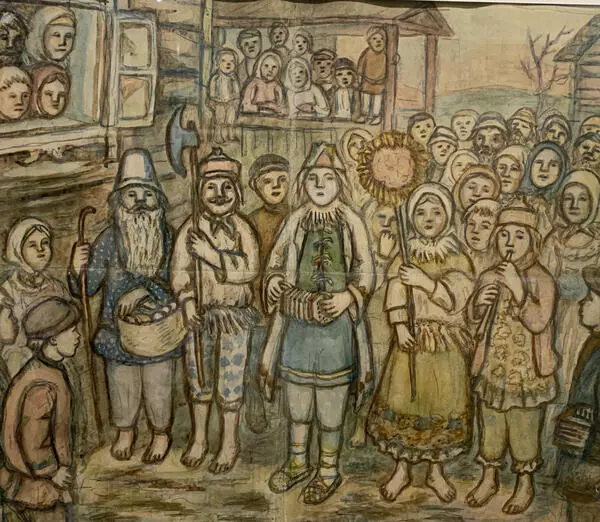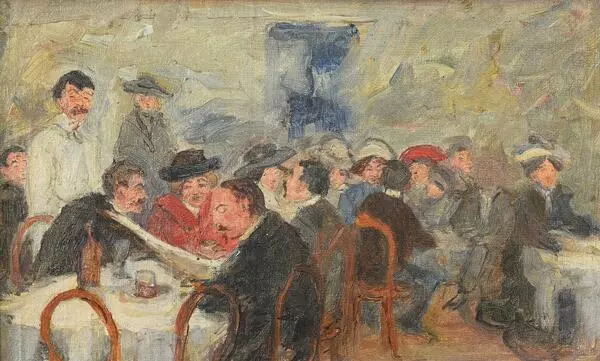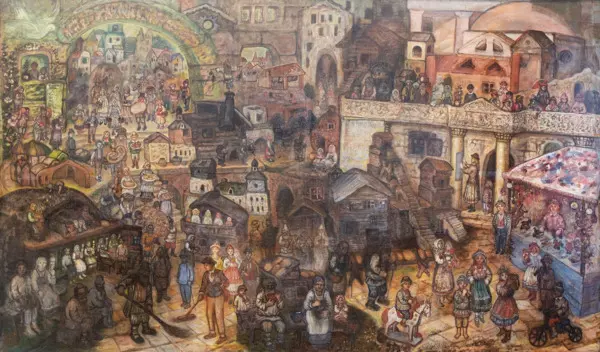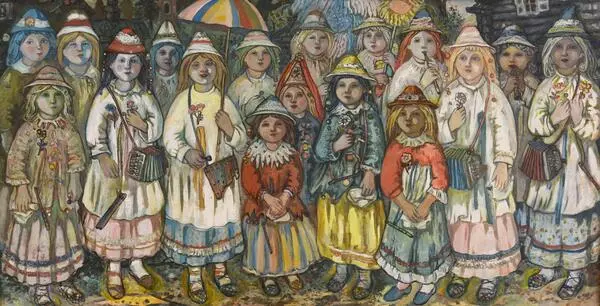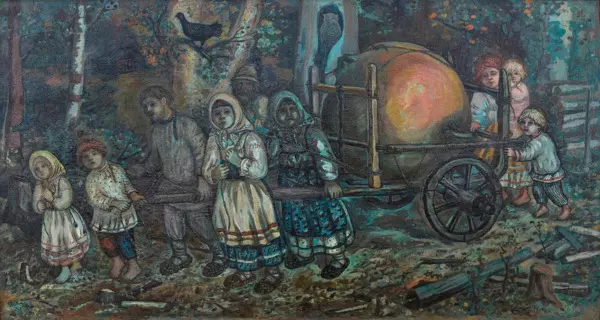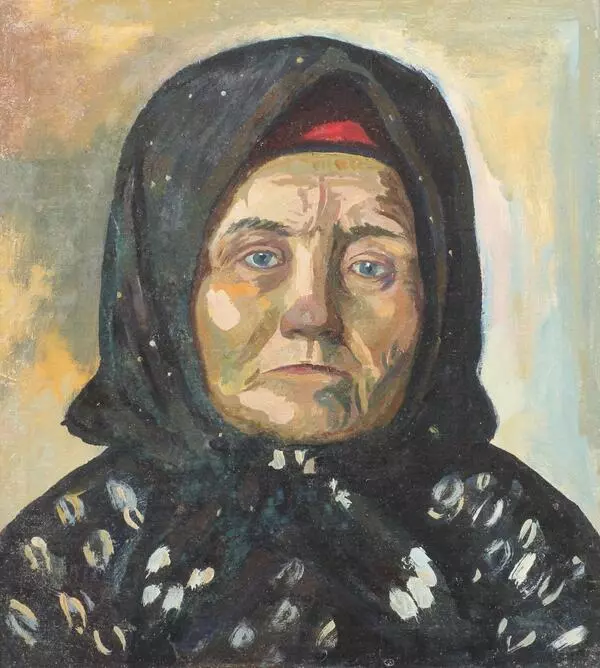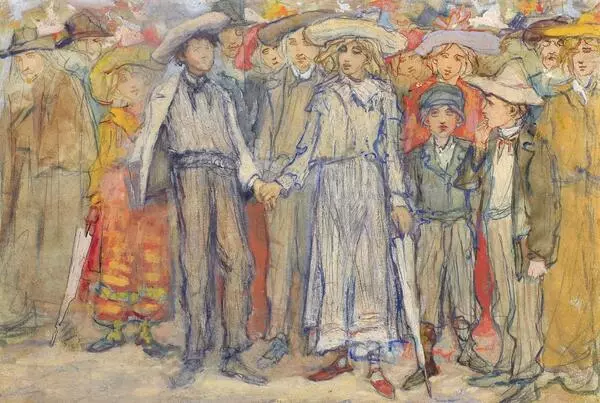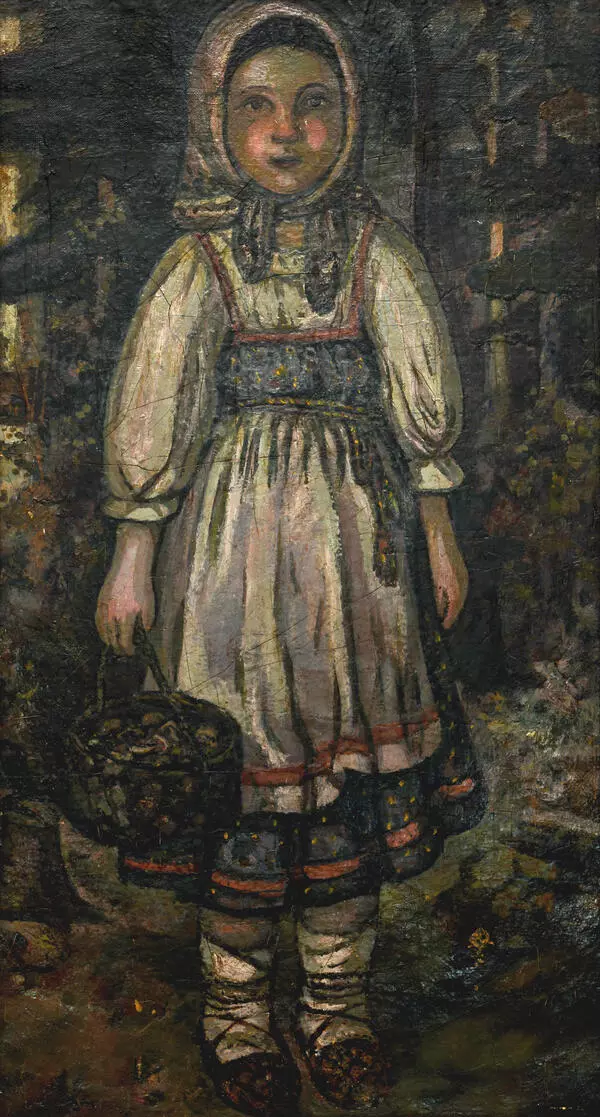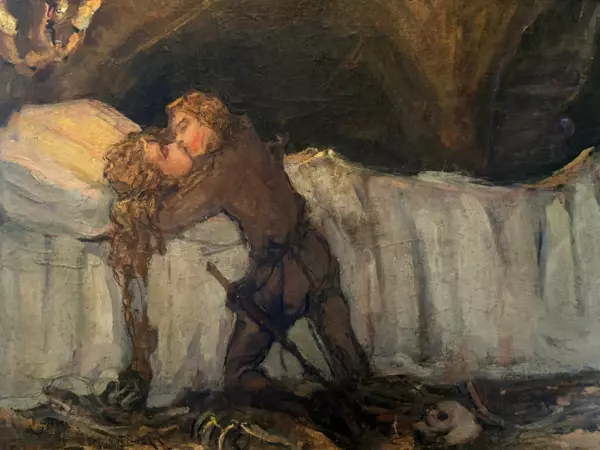The book of fairy tales “A magic apple. Ivanushko. Sergiyushko” was the only edition of Yefim Chestnyakov’s literary works, which included three of his most famous tales, to come out during his lifetime. It was first published in Saint Petersburg in 1914 by the publishing house ‘Medvezhonok’ (‘Bear cub’) owing to the support by Aleksey Chapygin. All three of the fairy tales came with black and white illustrations made by the artist.
A key feature of the published tales was the use of many words from dialects, which the author employed in his texts deliberately in order to showcase the richness and beauty of folk speech. Not only did Yefim Chestnyakov know well and love the peasant way of life but also his native Kologrivsky dialect. He spoke to his fellow villagers only in this dialect. However, during the process of publishing his fairy tales, he faced serious problems because many changes were made to his writing upon editing without any prior agreement. For example, many words from his dialect were replaced with more common variants that would be more familiar to readers, which prompted a negative reaction from Yefim Chestnyakov who, subsequently, even chose not to publish his literary works.
In a letter concerning the editing process, he wrote ‘There is not a single publishing house that would print something in purely Russian language… It is not my intention to make the public think that the aforementioned words and phrases in the published texts were actually written by me. The editors did not include any annotations about the way I chose to phrase things. Hence, by default, I appear to be a member of these “committees” that hamper the development of our own language…’. The book on display includes corrections made by hand by the author, probably soon after reading it. For instance, the word ‘apple’ in neuter gender is replaced with its equivalent in male gender. Similar changes are made to the words, such as ‘elderly man’, ‘hollowed-out’, etc. In many ways, Yefim Chestnyakov’s fairy tales are like Russian folk tales, but in the former the author’s style is much more prominent. There is a lesson to be learnt from his writing just as there are from his other works of art. For example, in ‘A magic apple’ the author’s message is quite obvious. The magic fruit could only be delivered to the village after an entire family had decided to get involved in the project. It was possible to move the ondrets (a two-wheeled cart for transporting hay) that the apple fell into all by itself only after a toddler in nanny’s arms started to push it. The plots of fairy tales ‘Ivanushko’ and ‘Sergiyushko’ are not elaborate and neither is their content. And yet they are both full of kindness, generosity, imagery of local nature and author’s empathy for the fate of his little heroes.
A key feature of the published tales was the use of many words from dialects, which the author employed in his texts deliberately in order to showcase the richness and beauty of folk speech. Not only did Yefim Chestnyakov know well and love the peasant way of life but also his native Kologrivsky dialect. He spoke to his fellow villagers only in this dialect. However, during the process of publishing his fairy tales, he faced serious problems because many changes were made to his writing upon editing without any prior agreement. For example, many words from his dialect were replaced with more common variants that would be more familiar to readers, which prompted a negative reaction from Yefim Chestnyakov who, subsequently, even chose not to publish his literary works.
In a letter concerning the editing process, he wrote ‘There is not a single publishing house that would print something in purely Russian language… It is not my intention to make the public think that the aforementioned words and phrases in the published texts were actually written by me. The editors did not include any annotations about the way I chose to phrase things. Hence, by default, I appear to be a member of these “committees” that hamper the development of our own language…’. The book on display includes corrections made by hand by the author, probably soon after reading it. For instance, the word ‘apple’ in neuter gender is replaced with its equivalent in male gender. Similar changes are made to the words, such as ‘elderly man’, ‘hollowed-out’, etc. In many ways, Yefim Chestnyakov’s fairy tales are like Russian folk tales, but in the former the author’s style is much more prominent. There is a lesson to be learnt from his writing just as there are from his other works of art. For example, in ‘A magic apple’ the author’s message is quite obvious. The magic fruit could only be delivered to the village after an entire family had decided to get involved in the project. It was possible to move the ondrets (a two-wheeled cart for transporting hay) that the apple fell into all by itself only after a toddler in nanny’s arms started to push it. The plots of fairy tales ‘Ivanushko’ and ‘Sergiyushko’ are not elaborate and neither is their content. And yet they are both full of kindness, generosity, imagery of local nature and author’s empathy for the fate of his little heroes.

